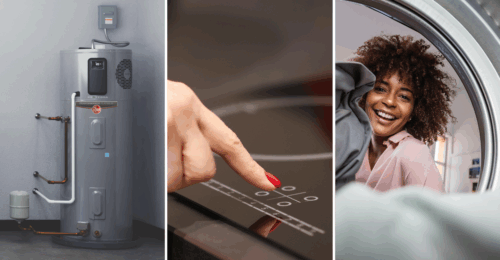Saving energy continues to be a hot topic for many Americans. And one of our favorite energy-saving products is an occupancy sensor, or a “smart” light switch from Lutron called the Maestro® occupancy sensor switch. This switch automates the lights in your home – it automatically turns lights on when you enter a room, leaves them on while you’re there and turns them off after you leave, so you can stop asking “Who left the lights on?!”
Occupancy sensors can save up to 50%* in lighting energy costs and are ideal for rooms where lights are frequently left on (think: bathrooms, kids’ playrooms, walk-in closets, etc.) and rooms you typically enter with your hands full such as a laundry room, foyer or garage. This infographic shows home lighting usage and behavior – and why kids get most of the blame for leaving the lights on!
Another Lutron switch, the Maestro occupancy sensor C·L dimmer, combines the convenience of an occupancy sensor with a dimmer, allowing you to change the room’s mood. Even better, you can use the dimmer with dimmable LEDs, CFLs, halogens and incandescent bulbs. Did you know that LEDs can be dimmed if used with the right dimmer? And Lutron makes the transition to LEDs easier – see their LED information page to learn more about dimming LEDs, choosing the right bulb and more.
For rooms where you don’t want the lights turning on automatically, or where you have pets frequently passing through, the auto-on feature can be disabled, which puts the sensor in “vacancy mode”. In this mode, lights must be manually turned on when you enter a room, but they will still turn off automatically when you leave. Vacancy mode is a great idea for bedrooms, kids’ rooms or rooms with pets. And one of the best features is that it won’t turn the lights on when enough daylight is present in the room. The sensor has an ambient light detector that “learns” your preferred light level and knows when to turn the lights on and when to keep them off.
Lutron is no stranger to saving energy. They make more than 17,000 energy-saving products, including these great occupancy sensors, as well as dimmers, automated window treatments and more. In the U.S. alone, their products save approximately 10 billion kWh of electricity, or about $1 billion in utility costs, each year. Some of the company’s early inventions — including the first solid-state dimmer — are now at the Smithsonian’s National Museum of American History in Washington, DC. In 1962, Lutron Founder Joel Spira received a U.S. patent for the solid-state dimmer, a device he invented in a spare bedroom in his New York City apartment. Today, some 52 years later, Lutron products are sold in more than 100 countries. And, of course, we prefer our readers find them at The Home Depot!
The Maestro occupancy sensing switch is easy to install in about 15 minutes. Simply turn off the power, then remove your existing light switch and replace it with the sensor — no special wiring is required. As always, be sure to follow instructions on the packaging, or you can find helpful videos on lutron.com. And if you have installation questions, Lutron has a free, U.S.-based technical support line at 1.800.523.9466 where reps are available 24 hours a day, 7 days a week to answer all of your questions.
*Average savings based on replacing a standard switch with an occupancy sensor in a residence (Source: Heschong Mahone Group. 1999. Lighting Efficiency Technology Report. Prepared for the California Energy Commission.) Actual savings may vary based on occupant use among other factors.






